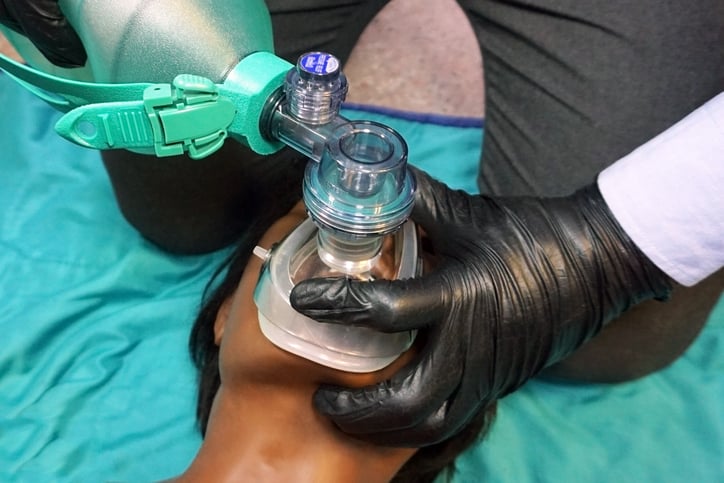
Hypoxia is one of the most common suctioning complications. It’s also preventable in most scenarios. Hyperoxygenate a patient before suctioning to reduce the risk of hypoxia as well as other suctioning complications. Here’s what you need to know about the process.
Why Preoxygenation Is Important
Sometimes hypoxia occurs following suctioning because the suctioning was ineffective at removing an obstruction. More frequently, suctioning itself is the culprit. During suctioning, a patient cannot breathe normally. Suctioning doesn’t just remove secretions; it also removes oxygen, so prolonged suctioning may increase the risk of a hypoxic state.
Limit tracheal suctioning to less than 15 seconds to lower the risk. In some cases, suctioning may also stimulate the vagus nerve, triggering bradycardia, hypoxia, and even fainting. In both scenarios, hyperoxygenation before suctioning can improve outcomes.
How to Hyperoxygenate
Before oxygenating the patient, conduct an assessment to determine whether suctioning is necessary. Though there are no absolute contraindications to suctioning, no procedure—including suctioning—is risk-free. The most common indications for suctioning include:
- Airway obstructions, especially when there is an obstruction from a trauma
- Aspiration or suspected aspiration, such as when the patient is actively vomiting or bleeding into the airway
- Airway secretions that the patient is unable to clear. A raspy cough, hoarse voice, or difficulty breathing may indicate that the patient cannot clear their airway.
The Proper Procedure
First, wash your hands and put on a new pair of gloves before touching the patient to begin oxygenation.
- Preoxygenate the patient using 100% oxygen before suctioning them.
- Neonates are the only exception to this rule. When working with a newborn, give 10% more than the baby’s baseline FiO2.
- Guidelines vary slightly depending on the patient and the reason for suctioning. In general, give oxygen for 30-60 seconds before suctioning.
- If you must suction them repeatedly or the first suctioning attempt fails, withdraw the catheter and oxygenate the patient again.
Oxygenation Safety and Recommendations
The risks of hyperoxygenation are minimal, although it is possible that oxygenation can distribute contaminants or move secretions deeper into the airway. Monitor the patient for signs of distress, and intervene if the patient begins to choke or aspirate.
Otherwise, the precautions you need to take before oxygenation are virtually identical to those you will use for suctioning:
- Use only clean, sterilized equipment.
- Wash your hands before and after treating a patient.
- Use sterile, latex-free gloves.
- If any contaminants from the patient or another person get onto your skin or the equipment, wash your hands, change gloves, and sterilize the equipment as necessary.
- Explain the procedure to the patient. This reduces anxiety, which can improve compliance.
- Ask about previous experiences with suctioning or oxygenation. If the patient has a prior history of complications, this may foreshadow complications with this procedure.

Post-Suctioning Monitoring and Oxygenation
Suctioning is not the end of treatment. You must continue to monitor the patient after suctioning, paying close attention to vital signs and behavior. Most agencies recommend oxygenating the patient after suctioning. This is doubly important in patients who exhibit signs of hypoxia before or during suctioning – oxygenate for 60 seconds after suctioning.
Choose the Right Suctioning Equipment
Portable emergency suction machines do more than just protect the airway in an emergency. Hospitals may use these machines to comply with their obligations under the Emergency Medical Treatment and Active Labor Act or tend to patients experiencing respiratory distress in waiting rooms or other areas that do not afford immediate access to wall-mounted suction.
In emergencies, reliable, consistent suctioning is vitally important. The right machine quickly clears the airway without losing power. For help selecting the appropriate machine for your agency, download our free guide, The Ultimate Guide to Purchasing a Portable Emergency Suction Device.
Editor's Note: This blog was originally published in August 2022. It has been re-published with additional up-to-date content.














